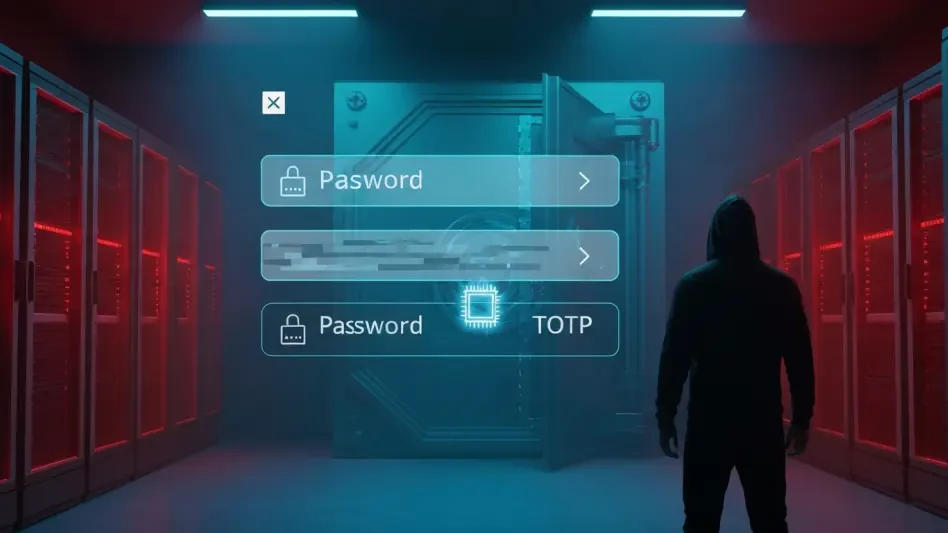In light of recent geopolitical upheaval, the international community has been riveted by the United States’ decision to execute “massive precision strikes” on Iran’s nuclear facilities. These aggressive actions from Washington aimed to halt Tehran’s nuclear program but have stoked fears of retaliation. Experts speculate that Iran’s response may veer away from conventional warfare, favoring the domain of cyber warfare instead. This scenario sets the stage for a potential escalation in cyber threats as Iranian state-linked entities capitalize on their established prowess in cyber offensives. The question that now looms is how Iran’s skilled cyber workforce might orchestrate a multi-pronged response to target U.S. assets, leveraging vulnerabilities across sectors critical to national security.
Iran’s potential cyber responses are drawing concern due to their conceivable implications for American infrastructure. Iran, a recognized power alongside Russia, China, and North Korea, has developed notable sophistication in cyber capabilities. Its position in the cyber warfare ecosystem paints a daunting picture for American defense strategists. Such worries are not without precedent; historical incidents reaffirm that the cyber realm presents a convenient, deniable avenue for retaliating against forces deemed antagonistic. This compels the U.S. to confront potential risks to essential sectors, including finance and energy, where vulnerabilities could be exposed, creating pressure points for adversaries to exploit. Strategists and policymakers remain vigilant, evaluating the multifaceted ramifications of such impending cyber threats.
U.S. Infrastructure Under Threat
As tensions between Iran and the United States fester, analysts predict that Iran may potentially target critical sectors within the U.S. infrastructure, utilizing advanced cyber tools. The sectors of primary concern include the financial system and the energy grid, both of which stand as pillars of the American economy. A breach within these sectors could paralyze financial transactions, disrupt energy supplies, and cause widespread havoc, not just economically but also geopolitically. Historical events substantiate these concerns. Iran’s past actions exhibit a strategy of targeting assets pivotal to adversaries and employing proxy groups to achieve strategic goals. Such conduct exemplifies how cyber warfare becomes a prolific tool for nations with resource constraints, enabling asymmetrical warfare against formidable opponents like the United States.
The Department of Homeland Security has been swift in issuing precautionary advisories to American organizations, urging them to brace for potential cyber offensives. These alerts emphasize an immediate necessity for sectoral vigilance, given the backdrop of escalating hostilities with Iran. Because of its comprehensive nature, the U.S.’s critical infrastructure defense strategy must now encompass sophisticated digital fortifications. Moreover, their concern is amplified by the chance that Iran might enlist proxy groups within the Middle East to launch attacks, thereby complicating the attribution and escalating the complexity of countermeasures. Thus, cyber resilience emerges as an urgent priority, pushing American industries to enhance their cybersecurity practices significantly.
Historical Context and Precedents
Iran’s potential use of cyber tools in response to American military actions is not unprecedented. Numerous historical cases showcase how Iran has engaged in cyber campaigns to retaliate against what it perceives as provocations from the United States. Notable among these incidents was the attack on Sands Casino, attributed to Iranian cyber actors, following critical political comments by the casino’s owner—a direct testament to Iran’s use of cyberspace as a battleground for statecraft. Such actions reflect a calibrated strategy, where Iran leverages its cyber capabilities to project power without breaching direct warfare thresholds. This tactic achieves strategic surprise, offsets military limitations, and represents a considerable challenge to U.S. cyber defenses.
The escalating cyber threat underscores an urgent need for improved cybersecurity frameworks within the U.S. Past retaliations, such as the attempted breach of New York’s Bowman Dam, emphasize the proactive role Iranian cyber operatives play. Each incident serves as a learning moment for both antagonist and target, illustrating vulnerabilities and prompting countermeasures. This ongoing exchange demonstrates how cybersecurity must adapt and evolve in response to advancing threats. Consequently, American cybersecurity circles remain on high alert, anticipating Iranian moves while retrofitting defense measures to address emerging digital battlegrounds. The dynamism of this domain reflects the broader geopolitical rivalries playing out through keyboard proxies rather than kinetic conflicts.
Proxy Groups and Cyber Networks
Beyond state-sponsored activities, Iran’s cyber response may include orchestrated actions from its network of proxy agents dispersed across the Middle East. Although limited in their reach concerning the U.S. mainland, these groups present credible threats to American interests globally. Their capabilities allow for calculated harassment of economic assets, intelligence operations, and disruptions that align with Tehran’s strategic objectives. The cyber domain offers them a platform to operate with lower risks and higher deniability, maintaining Tehran’s influence while projecting regional power. As such, these groups operate as extensions of Iran’s geopolitical reach, reinforcing the notion of cyber warfare as a tool of modern statecraft.
The Center for Internet Security notes that breaches attributed to Iranian actors have already compromised critical U.S. infrastructure, including water and wastewater systems. These incidents raise alarm, especially with the potential for more unsophisticated yet damaging tactics that Iranian operatives might employ. Such actions highlight how cyber warfare requires continuous adaptability from targeted nations. These proxy operations exemplify unconventional impacts on traditional power structures, blending cyber expertise with guerrilla-style tactics. It is imperative that U.S. cybersecurity strategists closely monitor these proxies’ activities, aiming to bolster defenses and mitigate potential cyber threats in real-time while discerning patterns that may indicate larger offensive campaigns.
Challenges and Opportunities for Cyber Defense
The international community watches closely as the United States’ decision to carry out “massive precision strikes” on Iran’s nuclear facilities unfolds, against a backdrop of geopolitical unrest. These strikes, aimed at curtailing Tehran’s nuclear ambitions, have sparked fears of possible retaliation. Experts suggest Iran may not resort to traditional warfare, choosing instead to engage in cyber warfare, where its capabilities are well-recognized. This development raises concerns about a possible rise in cyber threats, with Iran potentially orchestrating a multi-faceted response targeting U.S. interests and exploiting sector vulnerabilities critical to national security.
Iran’s cyber prowess is well-documented, standing with other nations like Russia, China, and North Korea. Defense analysts worry about potential impacts on American infrastructure, particularly in finance and energy. The history of cyber conflict reveals it as a stealthy yet effective method for retaliation. As a result, the U.S. must remain vigilant, analyzing how these looming cyber threats could impact essential sectors, ensuring readiness in the face of potential challenges.








